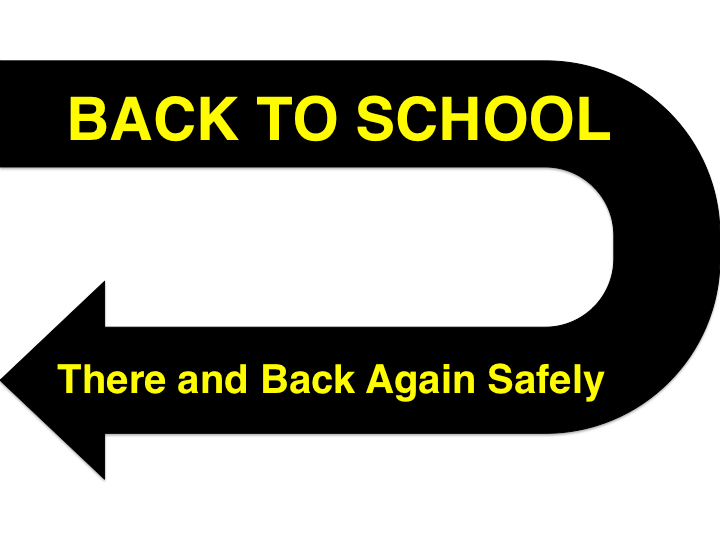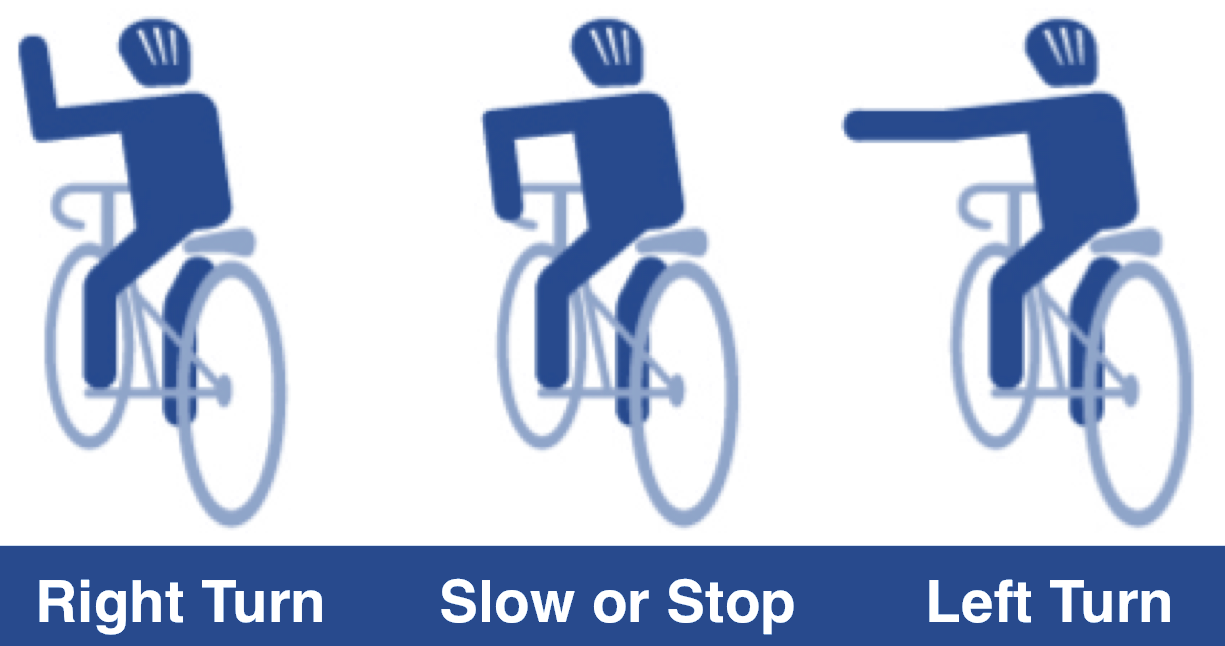As summer break comes to an end and children in Lincoln, Nebraska and throughout the United States return to school Lapin Law Offices wants to encourage students, parents, teachers and the community to be prepared as we want students to get to school and return back home safely. This includes the remembering the importance of pedestrian, bicycle, driver and school bus safety. While the overall number of crashes between student-pedestrians and vehicles has decreased, August has one of the highest number of these collisions. In addition, older students now are in the highest-at risk for being injured or killed going to and from school. In an effort to prevent injuries or fatalities to students heading back to school, we offer the following safety tips and encourage you to share them with your children, family and friends.
SCHOOL CHILDREN
Remember that you need to be a good role model for your children. Children often do what they see. Children learn through experience. Parents should practice with their children the proper and safe way to walk to and from school. Children are not small adults. It takes time and practice to develop the ability to deal with heavy traffic and to accurately judge the speed and distance of oncoming traffic.
CHILD-PEDESTRIAN AND VEHICLE CRASHES
![]() The most common types of crashes between child-pedestrians and vehicles:
The most common types of crashes between child-pedestrians and vehicles:
- Child darting out into street at corner or mid-block.
- Vehicle turning into path of a child.
- Child hidden from view by an ice cream truck or other vehicle.
- Child hidden from view by bus – driver does not stop.
- Vehicle backing up in roadways, driveways, or parking lots.
Safe Kids Worldwide with the support of FedEx issued a report about pedestrian crashes in 2012 (“Walking Safely: A Report to the Nation.”). The report examined trends in motor vehicle- related pedestrian injuries and deaths among children ages 19 and under in the United States. Some of the highlights of the report include:
- Over the past 15 years for children ages 19 and under:
- 53% decline in the pedestrian death rate.
- 44% decline in the pedestrian injury rate.
- 11,053 children have died as a result of being hit by a motor vehicle.
- More male pedestrian are injured or killed than females.
- Leading at-risk age group was 5 to 9 year olds for injury and death.
- 2010 information:
- Older teens are now the highest at-risk group for both injuries and death;
- The death rate among older teens is now twice that of younger children.
- The gender gap narrowed considerably for injuries, but less so for deaths.
- The number of nonfatal injuries is highest in the months when most students end and begin the school year.
- Children are most likely to be killed in the months of July, September and October and least likely in February.
- Location:
- 9% of child pedestrians died as a result of being hit in intersections;
- 56% were killed in other locations on the road; and
- 76% of deaths occurred in locations without traffic control devices.
The Report also discussed the question, “Why is it that older children are more at risk today?” The suspected causes were: distraction; the number of children walking and the distance they travel; and urban and rural factors.
PEDESTRIAN SAFETY
Here are some tips for children walking to and from school safely: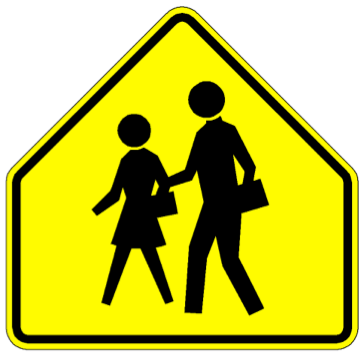
- Select a safe walking route:
- Choose a route with less traffic and intersections.
- Pick places where there are sidewalks or paths separated from traffic. If there are no sidewalks or paths, walk as far from the motor vehicles as possible and, if possible, on the side of the street facing traffic.
- Limit the number of street crossings. When available, cross at a location with an adult school crossing guard.
- Avoid crossing busy or high-speed streets.
- Take the “How walkable is your community?” Quiz:
- Cross the street safely:
- Stop at the curb or edge of the street.
- Look left, right, left and behind you and in front of you for traffic.
- Wait until no traffic is coming and begin crossing.
- Walk, do not run across the street.
- Keep looking for traffic until you have finished crossing.
- Choose the safest route to school.
- General tips:
- Look for vehicles at every driveway and intersection.
- Be aware of drivers in parked cars that may be getting ready to move.
- Obey all traffic signs and signals.
- Do not talk to strangers.
- Use the “buddy” system and walk with one or more friends.
BICYCLE SAFETY
Here are some tips for children that ride their bicycles to and from school: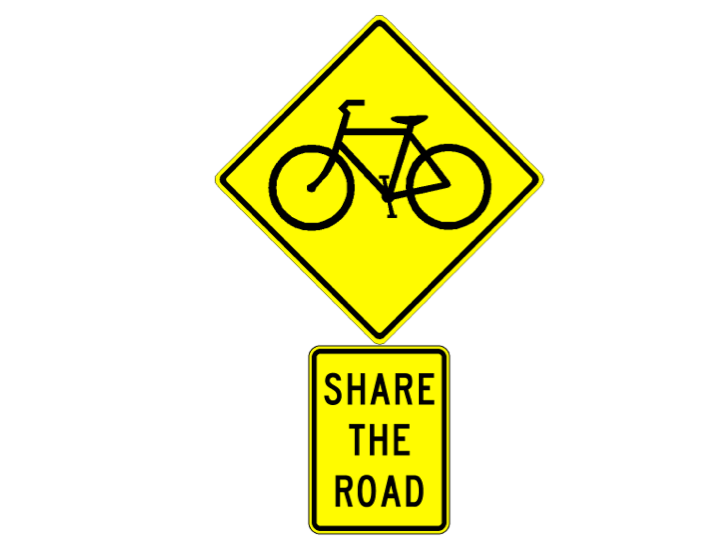
- Plan the route with your child.
- Take the “How bikeable is your community?” Quiz.
- Perform a bicycle and helmet check:
- When sitting on the bike with feet on the pedals, there should be a slight bend in the knee when the pedal is closest to the ground.
- The bike should have reflectors on the front, back, and both wheels. If riding when it’s dark or nearly dark, there should also be lights on the front and back.
- Make sure the tires have enough air, brakes and gears work, the chain is not loose, and wheels and bolts are tight.
- Make sure helmets fit properly:
- Eyes: The helmet should sit low on the forehead – about two finger widths above your eyebrows.
- Ears: With the helmet buckled, the straps should meet just below the ears.
- Mouth: When buckled, you should be able to fit no more than two fingers between the buckle and chin.
- Riding in the street:
- Ride in the same direction as traffic (with the flow) in a single file.
- If there is not a dedicated bicycle lane, ride to the right side of the road, but far enough from parked cars to avoid any car doors that suddenly open.
- Obey traffic laws and follow all traffic signs, signals and lane markings.
- Ride in a straight line.
- General tips:
- Keep eyes and ears open.
- Do not ride your bike distracted; your full attention should be on riding your bike.
- Watch for vehicles going in and out of driveways and alleys.
- Keep both hands on the handlebars except when signaling.
- Carry books and other items in a backpack or bag designed to fit on a bicycle.
- Stop before crossing the street, entering a road, or turning. Look left, right, left, and behind for traffic, including pedestrians, bicycles, and cars.
- Be predictable.
- Wear brightly colored clothes and reflective gear, with helmet buckled, shoelaces tied and pant leg on the chain side tucked so it cannot get caught.
- Use hand signals:
DRIVER SAFETY
- Inspect your vehicle before operating.
- Always wear your seat belt.
- Never drive impaired or distracted.
- Obey posted speed limits and all traffic signs.
- When the traffic light is green scan the intersection before proceeding.
- Be especially watchful near schools and when children are present.
- Be watchful of school zones; when the lights for these signs are on you must slow your vehicle to 25 MPH regardless of whether school is actually in session.
- Learn the proper route when dropping off and picking up your child from school.
- Double-check crosswalks and when exiting or entering a driveway.
- Know the rules for school buses.
SCHOOL BUS SAFETY
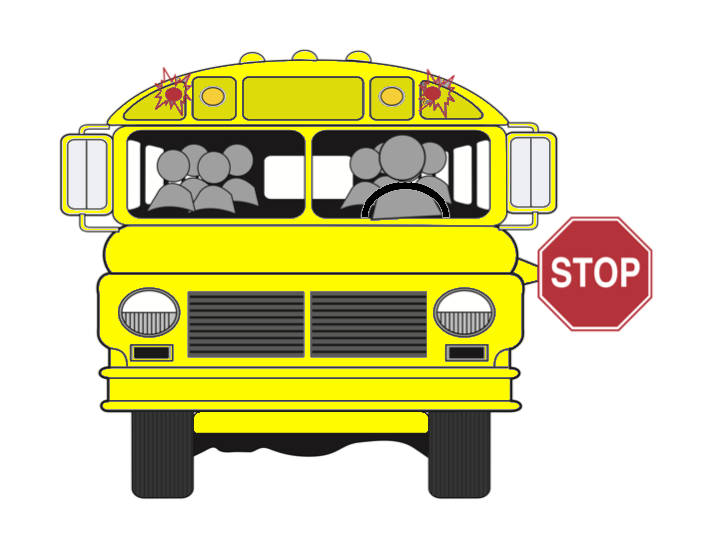 There are special rules for Lincoln and Nebraska drivers when school buses are operating:
There are special rules for Lincoln and Nebraska drivers when school buses are operating:
- Overhead Amber Warning Lights
- When a school bus is about to stop and load or unload children, the bus driver activates amber warning lights.
- When meeting or overtaking a bus, slow to 25 MPH and prepare to stop.
- The amber warning lights will stay on until the bus door opens.
- Overhead Red STOP Lights/STOP Arm
- When the bus driver opens the bus door, the red stop lights and STOP arm activates.
- Stop and remain stopped until the bus driver retracts the stop arm and deactivates the red warning lights.
- Stop a reasonable distance from the bus.
- The only exception occurs when approaching a school bus in the opposite direction on a roadway divided by a median.
- Failing to reduce your speed or stopping is a traffic offense and you can be ticketed. Three traffic points are assessed against your driving record for failing to stop when required.
- Always be alert for students on or near the roadway when a school bus is stopped.
Lincoln Public Schools prepared a Bus Safety Video stressing the importance of student safety in or near school buses: Please pay attention to school bus safety: (via YouTube):
SOURCES AND RESOURCES
- Centers for Disease Control and Prevention: Walk This Way! Taking Steps for Pedestrian Safety
- Childhelp.org (via Pinterest): 5 Back to School Safety Tips
- SafeRoutes: Helping your child be a safe bicyclist
- National Center for Safe Routes to School: Bikeability Checklist
- National Center for Safe Routes to School: Walkability Checklist
- National Highway Traffic Safety Administration: Prevent Pedestrian Crashes: Parents and Caregivers of Elementary School Children
- Nebraska Department of Roads: Nebraska Bicycle Safety
- Safe Kids Worldwide: Walking Safely, A Report to the Nation
- SafeRoute: Tips for Parents and Other Adults For Teaching Pedestrian Safety to Children
- SafeRoutes: National Center for Safe Routes to School
CONCLUSION
Hopefully we can have a safe start to the 2013-2014 school year. We reduce the chance of injury or fatalities if everyone is prepared, is not distracted and is watchful. Now that school is about to start again we want our children to go to school and be back safely.
ABOUT LAPIN LAW OFFICES
Lapin Law Offices wants all school children to get to school and back safely every day. However, we represent children and parents if they have been injured due to the wrongful conduct of a driver in Lincoln and throughout Nebraska. If your child has been injured give us a call at 402-421-8033, submit your information through our website Contact Us Form or chat with us through our Live Chat application to learn about us and what we can do for you.

